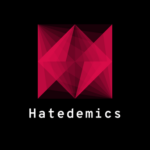
Historical Content Analysis
Temporal and Spatial Content Tracking
In recent years, temporal and spatial analysis has taken root in several closely connected areas of the humanities. The extraction of temporal information from text, e.g. from news, has become a major research topic in Human Language Technologies and has been widely used in related applications such as question answering and automatic summarization systems. Also the study and the exploitation of spatial information in history and literature has received a great deal of attention in recent years, especially thanks to the possibilities offered by geographical information systems (GIS).

Language Complexity and Readability
The complexity of texts is a multi-faceted phenomenon that affects the readability of documents but also contributes to characterizing the style of a writer / speaker. Furthermore, also a ‘subjective’ component is involved in language complexity, since a document which is understandable by certain readers may be obscure for others. With this respect, the complexity of texts is intertwined with the problem of language use and evolution, and can be investigated also from a diachronical perspective.






